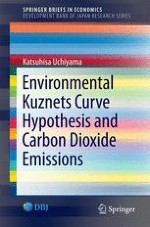2016 | OriginalPaper | Buchkapitel
2. Environmental Kuznets Curve Hypothesis
verfasst von : Katsuhisa Uchiyama
Erschienen in: Environmental Kuznets Curve Hypothesis and Carbon Dioxide Emissions
Verlag: Springer Japan
Aktivieren Sie unsere intelligente Suche, um passende Fachinhalte oder Patente zu finden.
Wählen Sie Textabschnitte aus um mit Künstlicher Intelligenz passenden Patente zu finden. powered by
Markieren Sie Textabschnitte, um KI-gestützt weitere passende Inhalte zu finden. powered by
